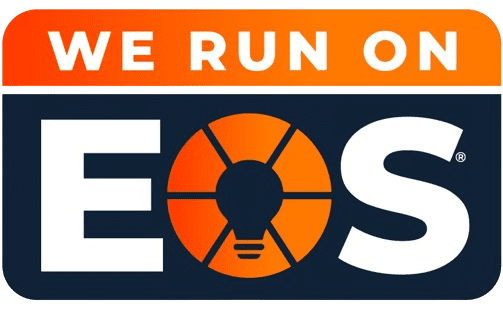While there are only two weeks remaining in the year, you still have a significant opportunity to end the year with momentum. A few targeted actions focusing on goal alignment, team reflection, and communication can make a meaningful difference in your leadership accomplishments. By centering your efforts on insights tied to each person’s strengths, you can close out the year productively while laying the groundwork for a smooth start to the next year.
1. Use Data-Driven Reviews to Reflect on Team Performance
Year-end reviews can often feel routine, but they can be powerful tools when driven by data. A review process based on specifics makes feedback more meaningful. When you ensure that employees understand their unique contributions are recognized, they are more likely to feel valued and motivated.
- Identify Strengths: Use specific examples of how individual strengths have contributed to team goals. If someone excels at problem-solving, highlight a time when their solution helped the team overcome a hurdle.
- Personalize Feedback: Generic praise can feel hollow, but data-backed feedback allows each employee to see their unique value. For example, you might say, “Your consistent attention to detail saved us time during project X.”
- Pinpoint Growth Opportunities: Connect each person’s natural strengths to their growth areas. For instance, if someone is highly detail-oriented but could improve their speed, frame the feedback around this observation, setting the stage for targeted development in the new year.
The data-driven review process makes feedback relevant, showing each employee that their contributions have been seen and valued.
2. Strengthen Goal Alignment for Maximum Impact
When individual goals align with team and organizational objectives, everyone moves in the same direction. Reviewing and adjusting individual goals in these final weeks provides closure and sets expectations for the future.
- Review Current Goals: Take a final look at each person’s goals and connect them directly to team or organizational objectives. This reinforces the purpose behind each task and helps employees understand how their work fits into the bigger picture.
- Set Short-Term Targets: Define small, actionable targets that your team can realistically complete in the remaining two weeks. Finishing these tasks will give them a sense of closure and accomplishment.
- Clarify Goals for Next Year: Start framing goals for the upcoming year. For example, if a team member excels at long-term planning, outline how they might lead a quarterly strategy initiative. Matching goals to each person’s strengths encourages focused growth.
Goal alignment reinforces a shared sense of purpose and clarifies the role each team member plays in achieving it.
3. Fine-Tune Roles and Responsibilities for the New Year
This is a great time for you to assess whether roles and responsibilities align with each team member’s strengths. Behavioral insights can help you identify where to make adjustments, leading to better performance and engagement.
- Assess Role Fit: Consider whether each person’s strengths match their current role. For example, if someone is naturally analytical, they may excel in a data-focused position.
- Redistribute Tasks: A team member who enjoys interpersonal interaction might take on more client-facing tasks, while someone who prefers deep-focus work might handle data analysis or complex problem-solving.
- Prepare for Skill Development: If someone lacks a skill needed for their role, set the stage for skill development initiatives early in the year, like mentorships or targeted training sessions.
Aligning roles with natural strengths makes the work more engaging for team members, ultimately boosting productivity.
4. Improve Communication and Team Cohesion
Effective interactions reduce misunderstandings and build trust. Understanding how each person communicates can help you adjust your approach to enhance clarity.
- Encourage Complementary Pairing: Pair team members whose strengths complement each other. For instance, a detail-oriented person might work well with a big-picture thinker, covering all bases in project planning.
- Reduce Miscommunication: Tailor communication to fit each person’s preferences. For example, if someone prefers written communication, use emails or shared documents rather than phone calls.
- Invite Honest Feedback: Create a space where team members feel comfortable sharing their thoughts. For example, use short surveys to gather feedback on recent projects or meetings, ensuring team members feel heard and respected.
Clear communication promotes collaboration and reduces frustration, helping everyone stay aligned.
5. Prioritize and Simplify End-of-Year Tasks
With limited time, prioritizing the right tasks is critical. Insights into individual motivators and strengths can help you assign tasks in a way that keeps everyone productive.
- Focus on High-Impact Tasks: Identify essential tasks that will have the biggest impact and create a plan to get it done.
- Minimize Unnecessary Meetings: Respect the need for uninterrupted focus by reducing meeting time, especially during this final push.
- Promote Quick Wins: Completing a project or hitting a milestone gives a sense of accomplishment that’s motivating as the year wraps up.
Prioritizing essential tasks prevents unnecessary stress and ensures the team’s efforts go toward meaningful work.
6. Reflect on the Year
This analysis is invaluable for identifying what’s working and where changes may be needed.
- Assess Leadership Impact: Reflect on how your actions and leadership style affected the team. Did your style motivate them? Were they engaged? What would you change?
- Examine Team Dynamics: Consider how team members interact with one another. Do they collaborate effectively? If conflicts arose, were they resolved smoothly? Address recurring challenges to promote a smoother workflow in the future.
- Identify Persistent Issues: Look for recurring problems or roadblocks. Addressing these issues with small process changes can prevent the same challenges next year.
Insightful reflection allows you to approach the new year with a clear strategy for improvement.
7. Close the Year with a Productive Wrap-Up Meeting
Hold a short, targeted meeting to wrap up the year and set expectations. This meeting should provide clarity and reinforce a sense of unity and accomplishment.
- Acknowledge Specific Accomplishments: Mention specific achievements, showing each team member how their work impacted the team.
- Set Clear Expectations for January: Outline key priorities for early next year. This can include brief updates on ongoing projects or new initiatives.
- Identify Resource Needs: Have the team express any resources or support they feel would help them succeed next year.
A well-structured closeout meeting leaves everyone with a sense of accomplishment and a clear idea of what to expect in the coming year.
8. Document Essential Knowledge for Continuity
End-of-year documentation is vital, especially if responsibilities or projects will change. Organizing this information reduces knowledge loss and prepares the team for a seamless start next year.
- Summarize Key Projects: Create summaries for essential projects, including tasks completed, and results achieved.
- Update Team Profiles: Document any role changes or development goals, making sure these adjustments are accessible to all team members.
- Organize Client Information: If team members handle client accounts, update all client information, including notes on communication preferences and project details.
Good documentation creates continuity and helps everyone hit the ground running in January.
9. Encourage Personal Reflection and Development
Encourage your team members to reflect on their own strengths and growth areas. Personal reflection helps employees see their progress, giving them a sense of direction for their development.
- Promote Self-Assessment: Encourage employees to identify skills they want to develop. For example, they might ask themselves what they enjoyed most this year or where they felt most productive.
- Set Development Goals: Help each person establish one or two development goals. These goals should be practical and linked to the team’s objectives.
- Encourage Skill-Building: Identify specific skills that will help the individual in their roles next year.
Encouraging personal growth builds confidence and prepares team members for focused development.
10. Reinforce Core Values and Vision
The end of the year is a great time to reaffirm core values and align team efforts with the organization’s mission. This approach strengthens team unity and purpose.
- Connect Values to Actions: Show how specific projects or achievements reflect core values, helping team members see the purpose behind their work.
- Highlight Individual Contributions: Recognize how each person’s strengths have contributed to the team’s objectives. If a team member demonstrated resilience, share that example.
- Foster Ownership: Highlight the idea that every team member plays a role in achieving the organization’s mission. When employees understand their impact, they’re more likely to stay engaged and motivated.
Reinforcing values at year-end connects everyone to a shared purpose, setting a positive tone for the new year.
As the year draws to a close, the actions you take in these final weeks can set the foundation for future success. Focus on leveraging data-driven insights, aligning goals, and fostering open communication within your team. Use this time to reflect on accomplishments and discuss improvements. By implementing these strategies, you not only finish the year strong but also cultivate a motivated and engaged team ready to tackle the challenges of the new year. Your leadership can make a lasting impact, paving the way for continued growth and achievement in the months to come.






















